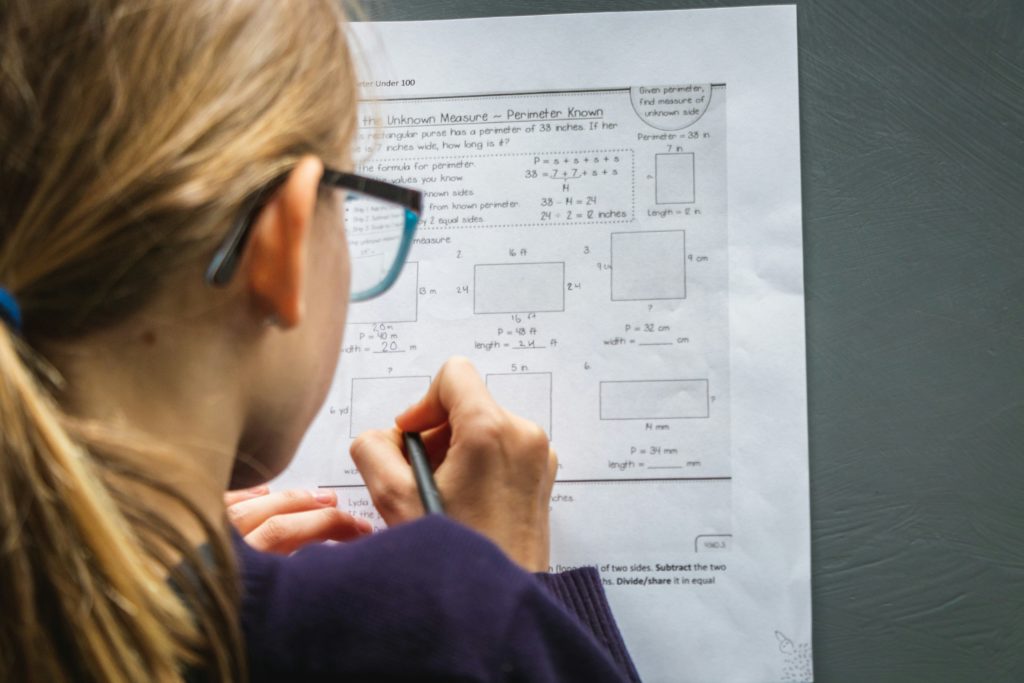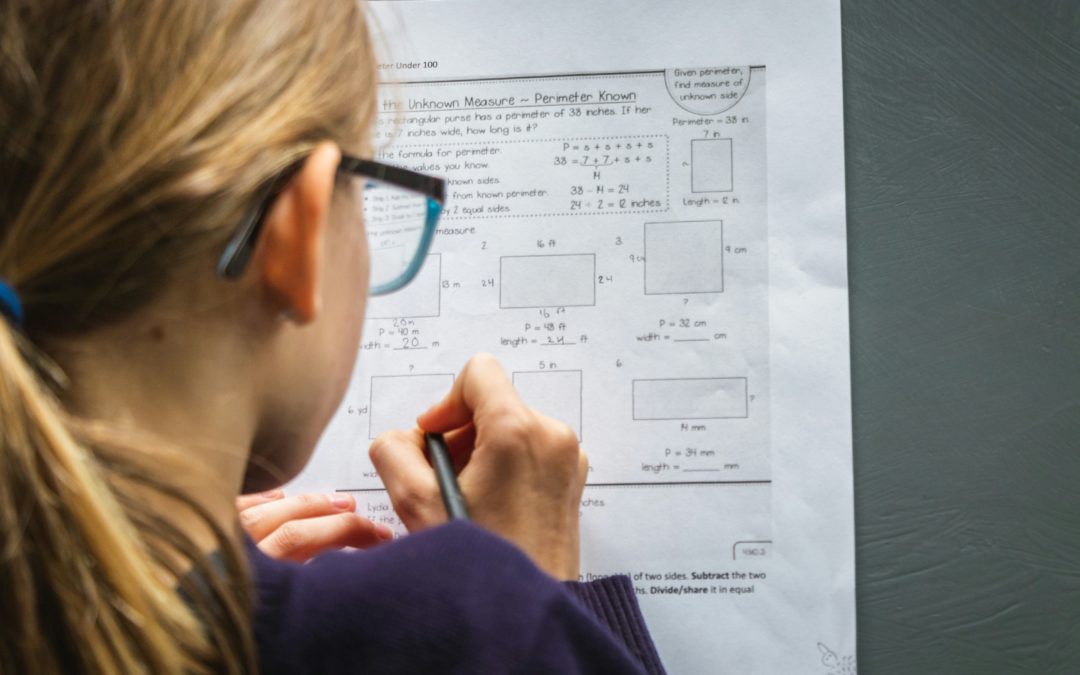
When we think about math, we often envision numbers, equations, and calculations. But here’s the thing: math is also a language, one that requires us to read, interpret, and apply written information. Research indicates that students struggling with literacy often struggle to understand math problems, apply concepts, and articulate their reasoning. Math isn’t merely about numbers; it’s about grasping relationships, patterns, and real-world applications. Here’s why literacy is so important in math learning:
1. Understanding word problems
Many students find word problems challenging, as they demand solid comprehension and the capacity to translate information in mathematical concepts. It has been shown that low reading skills make it very difficult to solve complex, language-based problems (Boonen et al. 2016). Learning to break down problems, pinpoint key terms, and link mathematical concepts to real-life scenarios are all essential skills that need to be worked on.
2. Math Vocabulary and Comprehension
Mathematical language contains specific terms like denominator, coefficient, symmetry, etc. Even common words like difference or product take on special meanings in math. Teaching math vocabulary explicitly can boost math abilities in young learners. Introducing math vocabulary in different ways, using representations, and repeating exposure can make it easier for students to remember and use these terms accurately (Lariviere 2024).
3. Interpreting Instructions and Explanations
Students need to read and understand instructions accurately in many situations: from textbooks to exams to standardised tests. Working on comprehension skills and encouraging students to read carefully and think critically about the instructions and explanations is essential to help them improve their skills. Learning about problem-solving steps is crucial for learning, self-mastery, and concentration (Nicolas & Emata 2018).
4. Expressing Mathematical Reasoning
Being able to articulate their thought process is essential for students in order to make connections and decide on the correct strategy to reach a solution. This can be fostered by encouraging learners to explain their reasoning to their peers or teachers, helping them to communicate their understanding of math concepts more effectively and discovering different methods and perspectives (Calkins et al. 2019).
5. Improving limited language access
All of these previous points make it clear that a group that can be expected to struggle with mathematics is students with a different home language than the language of instruction (11,5% of pupils in the European Union). It has been proven that their capacities for reading comprehension in the school language largely predict how well they perform in mathematics (Greisen et al, 2021). This means that literacy support is even more crucial for this specific group.
Other groups of students can be disadvantaged in mathematics performance because of limited language access. Deaf and hard of hearing (DHH) children who have not been exposed to fluent sign language from birth tend to perform poorly in math (Santos and Cordes 2021). To support them, it is essential to give them access to the content thanks to skilled interpreters, visual materials and assistive technology (Reis 2024).
All of these elements raise the question of effective strategies to support literacy in math education. Here are several that educators can adopt to bridge the gap between reading and math:
- The use of Narrative-Based Learning: Weaving in storytelling to help students visuali
zse math concepts in real-life situations, to hear mathematical vocabulary in context, and to break down information is helpful for pupils.
- Teaching Math Vocabulary Explicitly:Introducing essential terms with clear definitions and visuals.
- Supporting Word Problem Strategies: Teaching students to highlight keywords, summari
zse questions, and pinpoint relevant information.
- Encouraging Discussion and Writing in Math: Having students articulate their reasoning through writing or classroom discussions.
- Supporting Multilingual Learners: Offer bilingual glossaries, simplify complex instructions, use visual aids and let students work through problems in their strongest language before switching to the language of instruction.
In conclusion, math and literacy are closely intertwined. By embedding math within engaging narratives and by supporting the language development of pupils, it is possible to empower students to enhance their problem-solving skills, build confidence, and gain a deeper understanding of mathematical concepts. With innovative approaches like the Enigmathico project, we can make math more accessible, inclusive, and enjoyable for all learners.
Bibliography:
Boonen, Anton J. H., Björn B. De Koning, Jelle Jolles, et Menno Van Der Schoot, “Word Problem Solving in Contemporary Math Education : A Plea for Reading Comprehension Skills Training”, Frontiers In Psychology, Vol. 7, février 17, 2016. https://doi.org/10.3389/fpsyg.2016.00191.
Calkins, Susanna, Sharisse Grannan, et Jason Siefken, “Using Peer-Assisted Reflection in Math to Foster Critical Thinking and Communication Skills”, PRIMUS, Vol. 30, No 4, avril 18, 2019, p. 475499. https://doi.org/10.1080/10511970.2019.1608608.
Greisen et al., “Learning Mathematics with Shackles : How Lower Reading Comprehension in the Language of Mathematics Instruction Accounts for Lower Mathematics Achievement in Speakers of Different Home Languages”, Acta Psychologica, Vol. 221, novembre 1, 2021, p. 103456. https://doi.org/10.1016/j.actpsy.2021.103456.
Lariviere, Danielle O., Tessa L. Arsenault, et S. Blair Payne, “A Literature Review : Mathematics Vocabulary Intervention for Students with Mathematics Difficulty”, School Science And Mathematics, juin 24, 2024. https://doi.org/10.1111/ssm.12684.
Nicolas, Cherry Ann T., et Charlyn Y. Emata, “International Journal of Innovation in Science and Mathematics Education, 26(3), 40–64, 2018. 40 An Integrative Approach through Reading Comprehension to Enhance Problem- Solving Skills of Grade 7 Mathematics Students”, International Journal Of Innovation In Science And Mathematics Education, Vol. 26(3), 2018, p. 4064.
Reis, Nalva Cristina Andrade Dos, “OS DESAFIOS NO ENSINO DE MATEMÁTICA PARA ALUNOS COM DEFICIÊNCIA AUDITIVA”, Revista Fisio&Terapia., Vol. 28, No 136, janvier 1, 2024, p. 2930. https://doi.org/10.69849/revistaft/th10247281829.
Santos, Stacee, et Sara Cordes, “Math Abilities in Deaf and Hard of Hearing Children : The Role of Language in Developing Number Concepts.”, Psychological Review, Vol. 129, No 1, juin 17, 2021, p. 199211. https://doi.org/10.1037/rev0000303.

